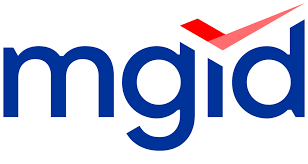Goodbye cookies and creepy personalization, hello context and high-value relevance
As we near the long-awaited sunsetting of third-party cookies, the digital advertising and publishing ecosystem has an opportunity to leave the mistakes of the cookie era in the past.


Relevance has been the benchmark of advertising for hundreds of years. Since the first newspapers started flying out of printing presses, media owners have sold advertising space based on the relevance of the advertisement to their audience. This value exchange, where the sale of relevant advertising subsidizes the cost of creating and distributing media, became firmly ingrained and accepted as it spread throughout the media landscape.
But the digital era muddled this centuries-old agreement between consumer, advertiser, and publisher. Cookies turned audience data — once held firmly in publishers’ hands — into a free-for-all and allowed users to be targeted on an individual basis for the first time. Advertisers felt like they had struck gold, but publishers became mere hosts to programmatic placements they had little control over, while consumers became nervous about how much of their personal data was out in the wild.
As we near the long-awaited sunsetting of third-party cookies, the digital advertising and publishing ecosystem has an opportunity to leave the mistakes of the cookie era in the past. Let’s not forget that the sense of “creepiness” enabled by ever-present user targeting and tracking is what attracted regulatory scrutiny and consumer backlash. To avoid history repeating itself, we need to move from personalisation towards relevance. But what’s the difference between the two?
Personalization directly targets the individual. This attention might be welcome in areas such as the sales experience or content curation, but in advertising, it can feel intrusive or — if based on faulty data — bizarre. Relevance, on the other hand, goes back to the basics of advertising: the right message, at the right time, in the right place. Relevant ads match the surrounding media and align with the user’s interests, without pointing directly at them.
Contextual and native advertising combine for a premium ad experience
Relevance may be as old as advertising itself, but that doesn’t mean its modern iteration isn’t cutting-edge. Today’s AI-powered contextual advertising technology allows ad creative to be automatically matched to its surrounding media with incredible precision, thanks to the semantic understanding unique to large language models. This allows advertisers to bid for relevant placements without requiring user data or an identity layer, while publishers can boost the value of their unknown user traffic.
Native advertising formats can further enhance the relevance and feeling of quality provided by contextual advertising. Rather than packing a page with off-the-shelf banners and videos, native formats fit seamlessly and elegantly with their surroundings, ensuring that advertising does not detract from the content that hosts it. The mix of contextual and native advertising creates a harmony that was once exclusive to the purposeful placements of magazines and newspapers.
The ability of contextual advertising to provide targeting solutions without user data does not mean such data is obsolete. But the difference to the pre-GDPR era is who possesses this data, and for what purposes. Now that third-party data cannot be so easily handed around, publishers’ consented first-party data is a goldmine of audience intelligence. Packaged correctly, this data can be used to add detail to contextual segments, build targetable cohorts, or used to secure direct deals with advertisers.
Prioritizing relevance can also expand publishers’ commercial strategy beyond merely driving up CPMs. In my role, I always advise publishers to steer their commercial strategy towards average revenue per user (ARPU), which encourages prioritization of the user experience to keep them engaged and loyal — key to the long-term audience building that can attract premium advertisers.
Relevance complements ARPU because both ask, what’s best for the user at this moment? It might be another ad slot, or it might be a link to a related article, a brand survey, breaking news, newsletter promotions, event details, a subscription offer, or any number of non-ad-related media that keeps the user around and thus has a positive impact on ARPU. Publishers should explore (and ad tech companies should deliver) dynamic solutions that automate this process to ensure user experience and ARPU are aligned with minimal effort.
Personalization is a thorn in the side of digital advertising’s reputation
How many times have you heard an acquaintance complain that their phone is listening to them after being served a suspiciously accurate personalized ad? Their phones aren’t listening, of course — the sophistication of personalized targeting means there’s no need — but the end result is the same: a feeling of paranoia amongst web users that they are always being observed.
And it’s this unsettling sensation — along with valid fears that their data is not being safely held or is being used for mysterious purposes — that undermines trust between consumers and advertisers, and, by extension, the media owners that host the ads. This lack of trust spurs the use of ad blockers and VPNs, which catch unintrusive ads in the crossfire, depriving publishers of ad revenue while pushing advertisers towards walled gardens where ad blocking is not effective.
Even if these personalized targeting methods operate within the bounds of GDPR or US equivalents like the CPRA, the user experience and trust remain compromised, along with the long-term health of digital advertising. We must establish a new paradigm that benefits all parties in the ecosystem’s three-way exchange by leveraging contextual targeting, AI, and consented first-party data to deliver relevant ads to engaged users without crossing the creepiness line.
Only with public trust will this industry be free from its game of cat and mouse with regulators, at which point we can knuckle down and focus on delivering long-term innovation. Let’s leave the mistakes of the cookie era in the past and deliver a supply chain we can be proud of — built to last, with nothing to hide.














